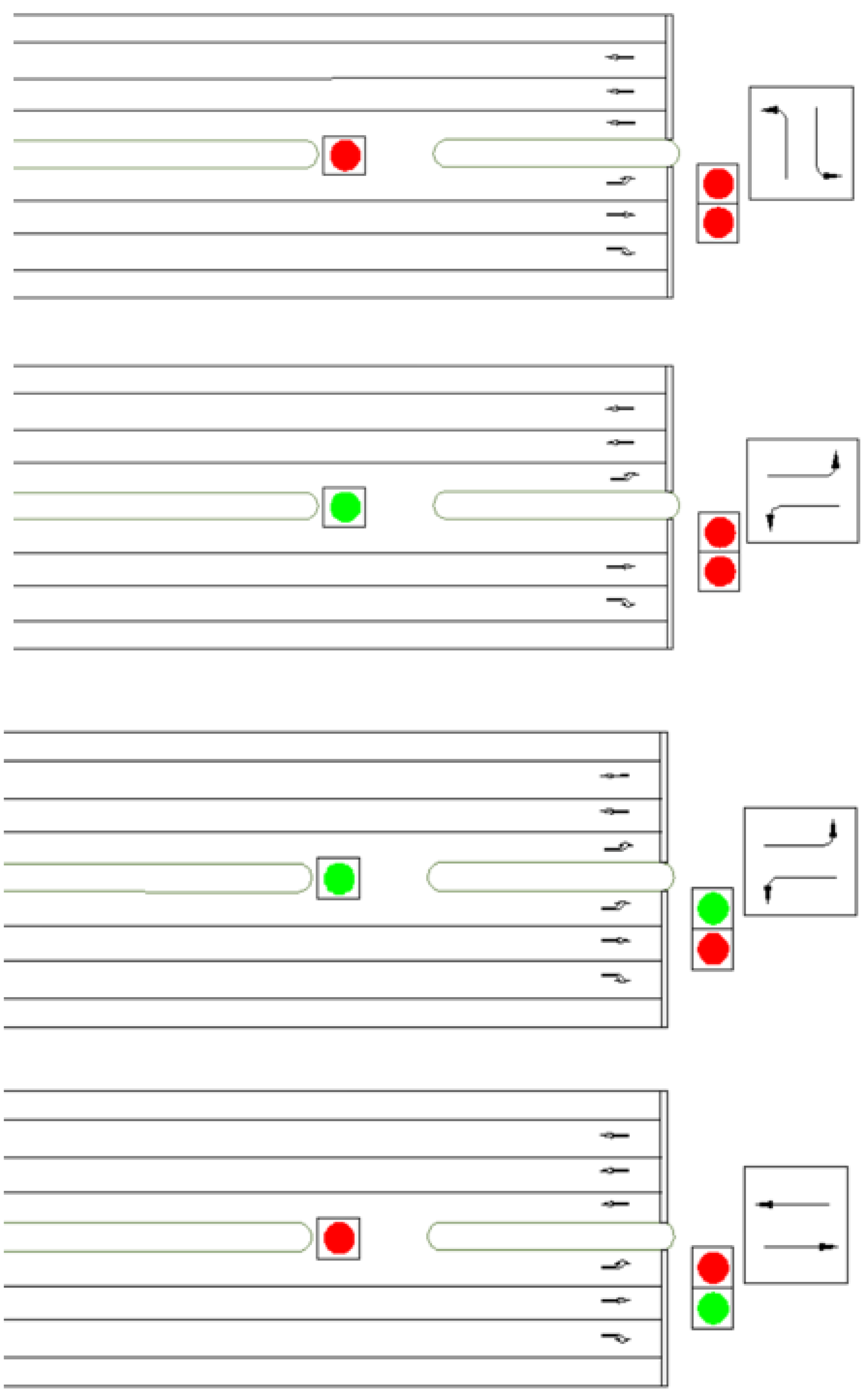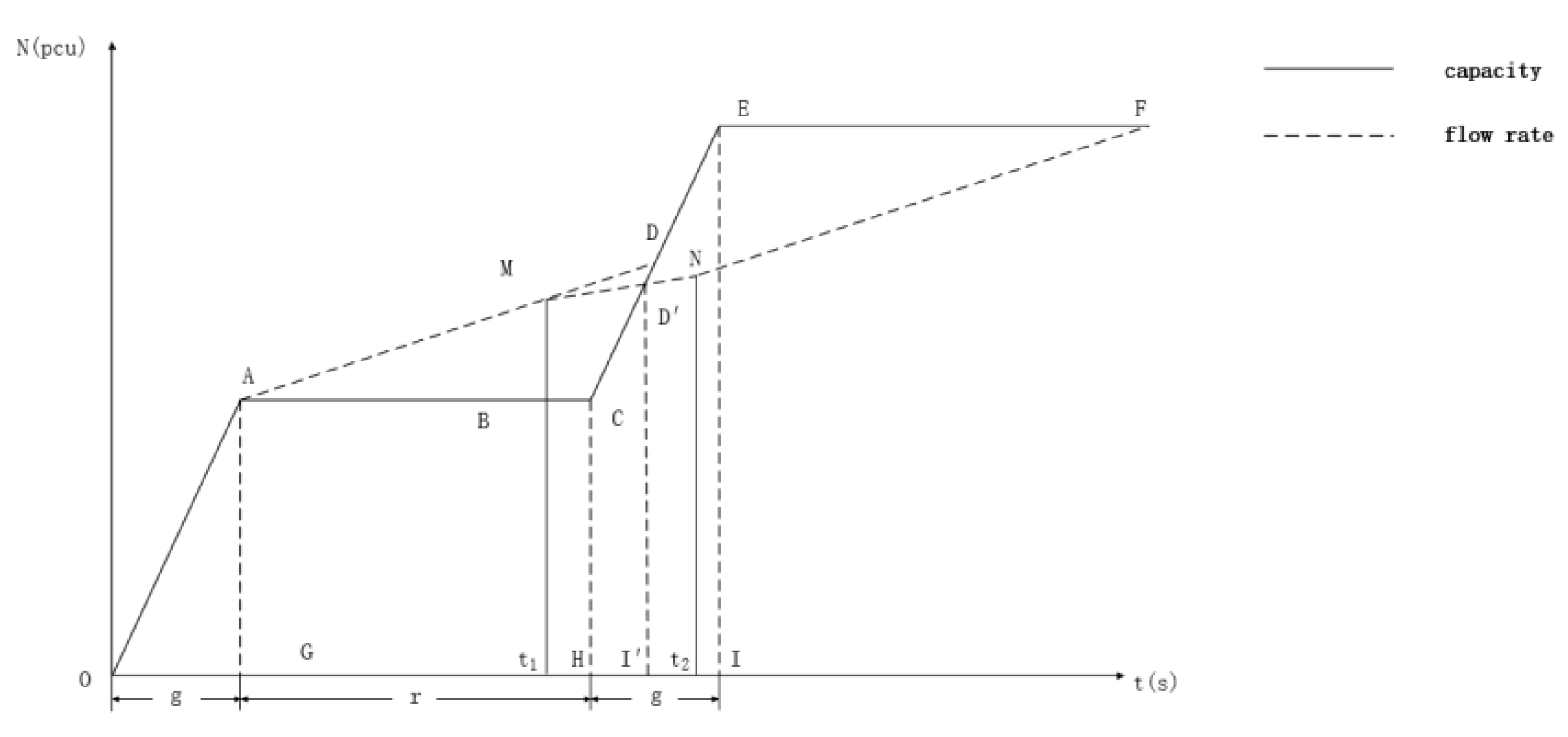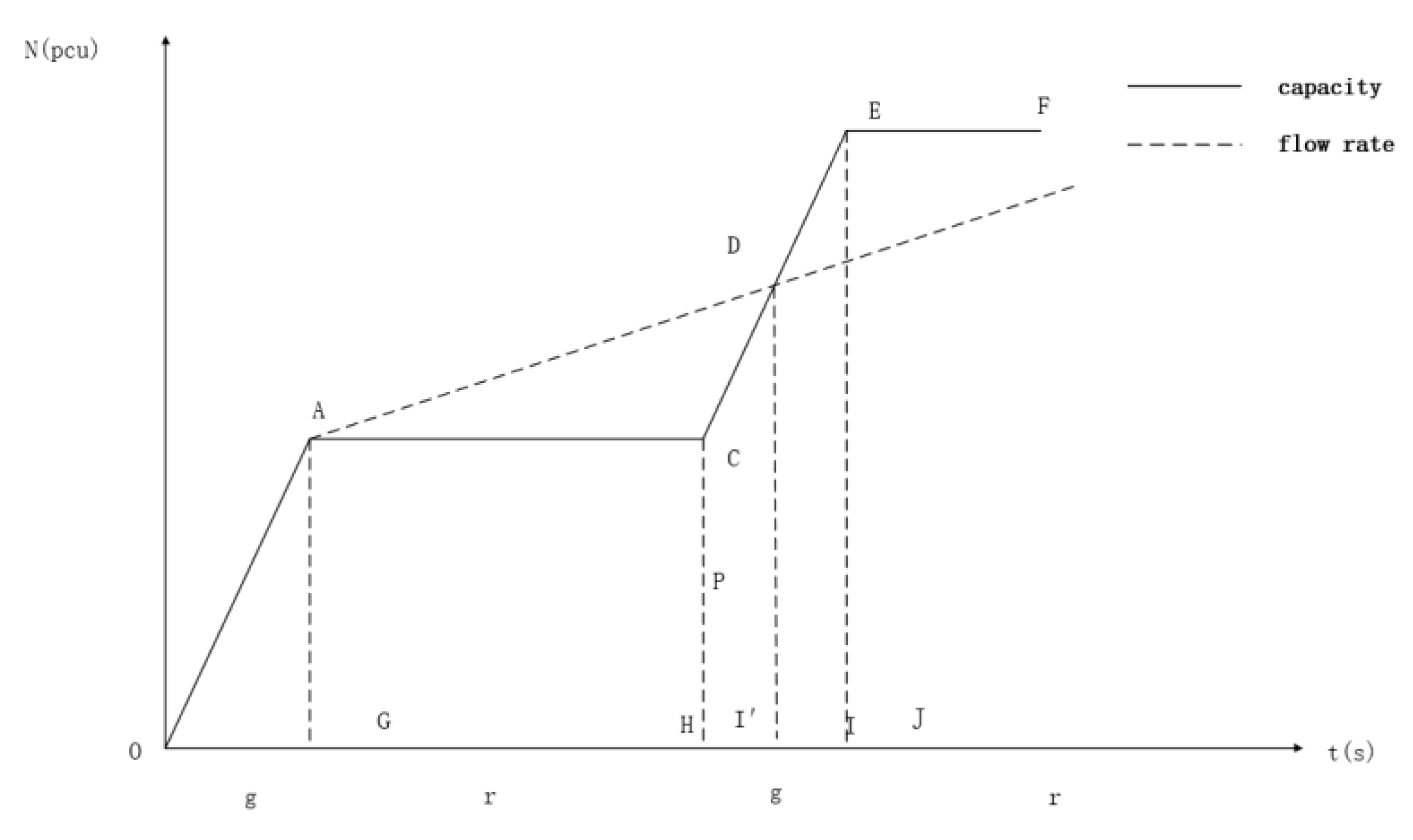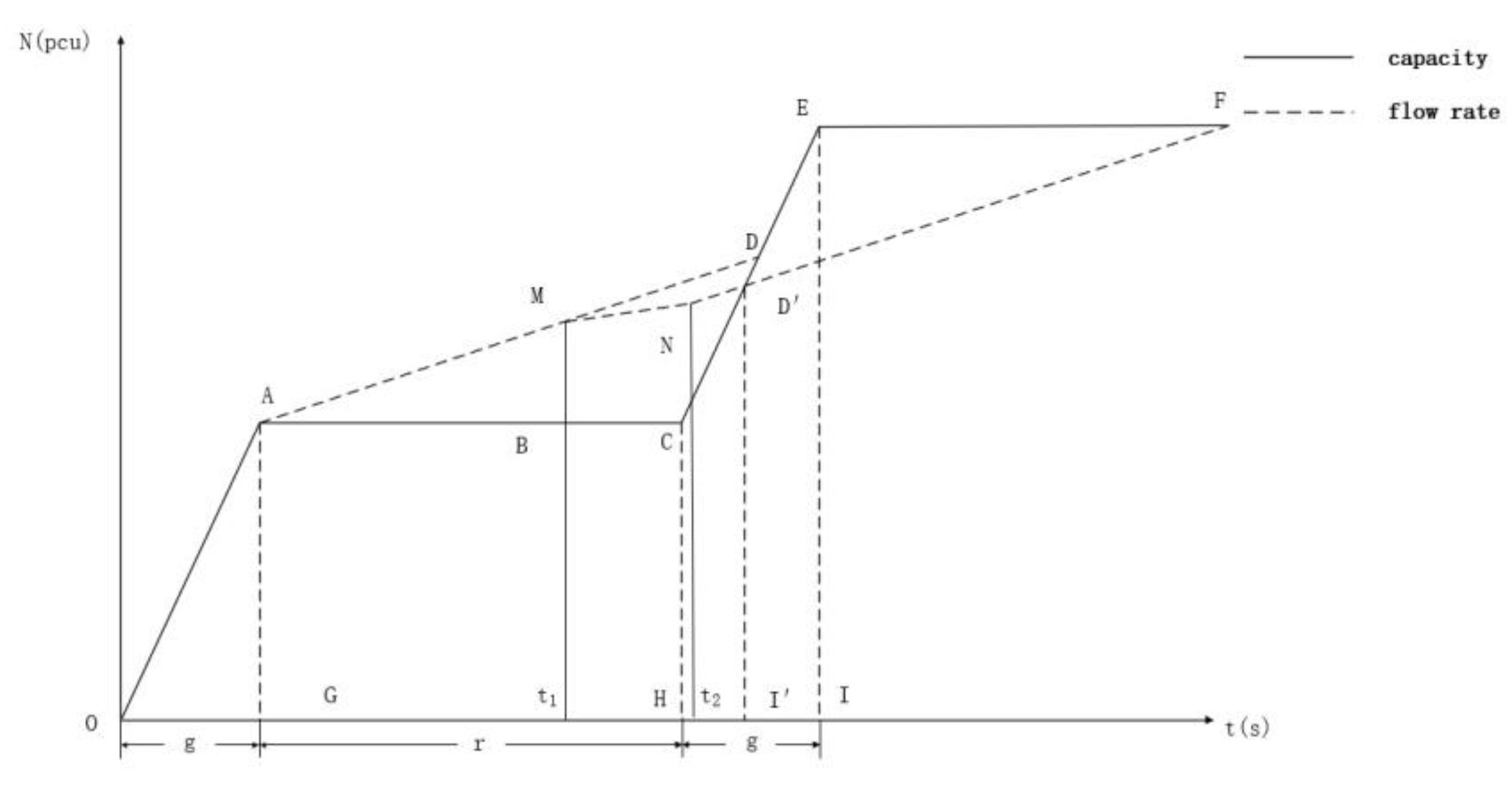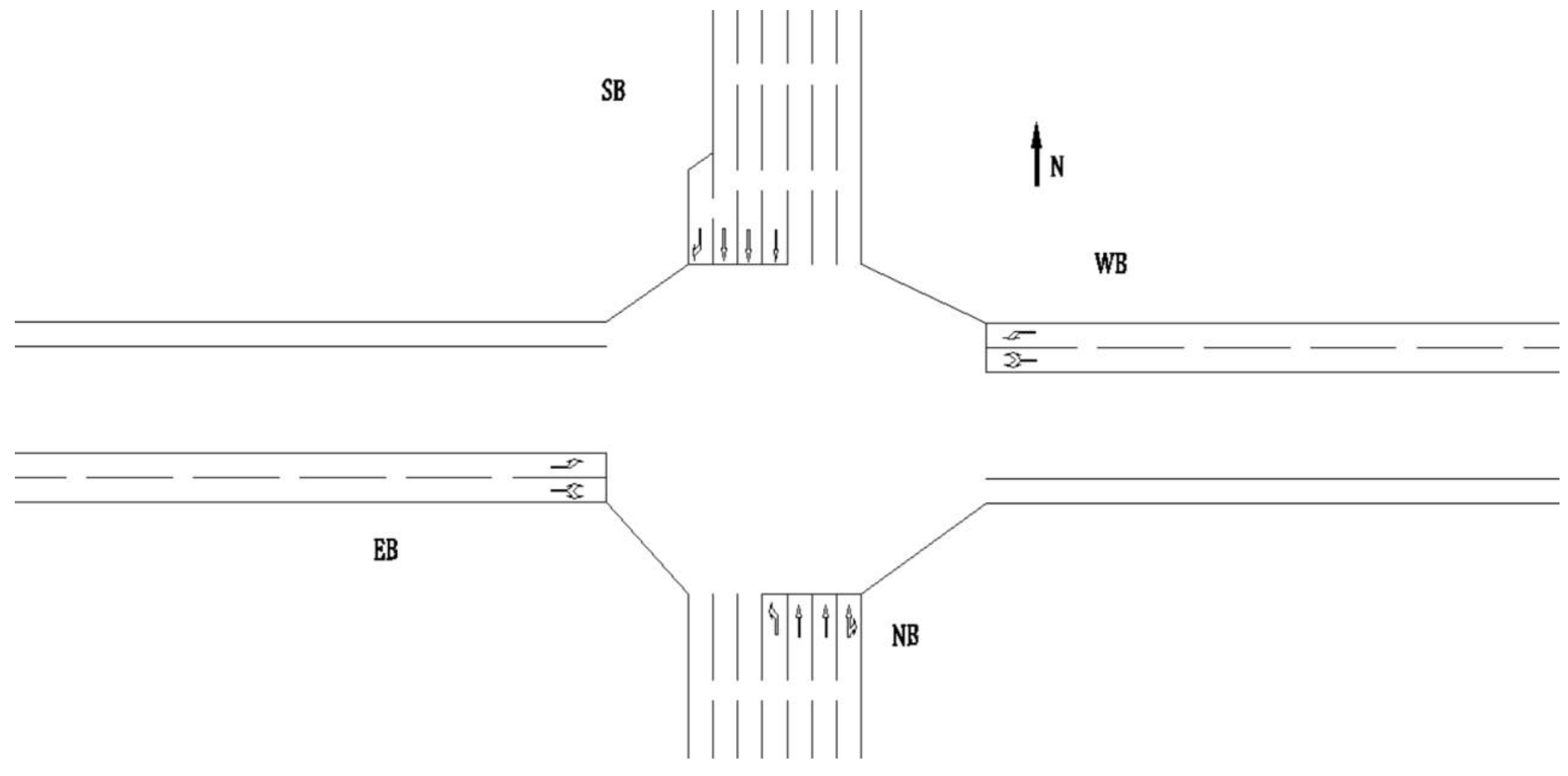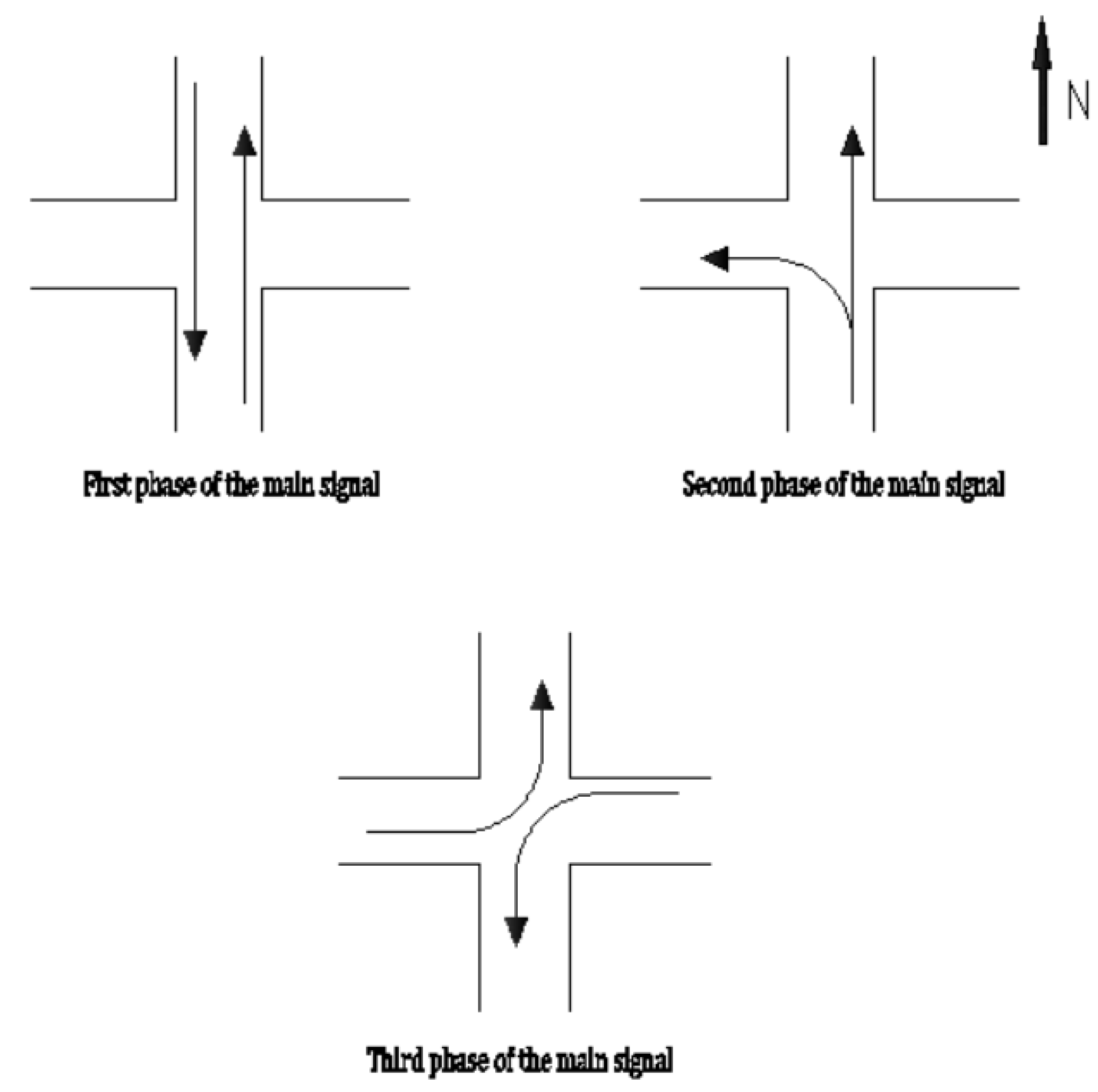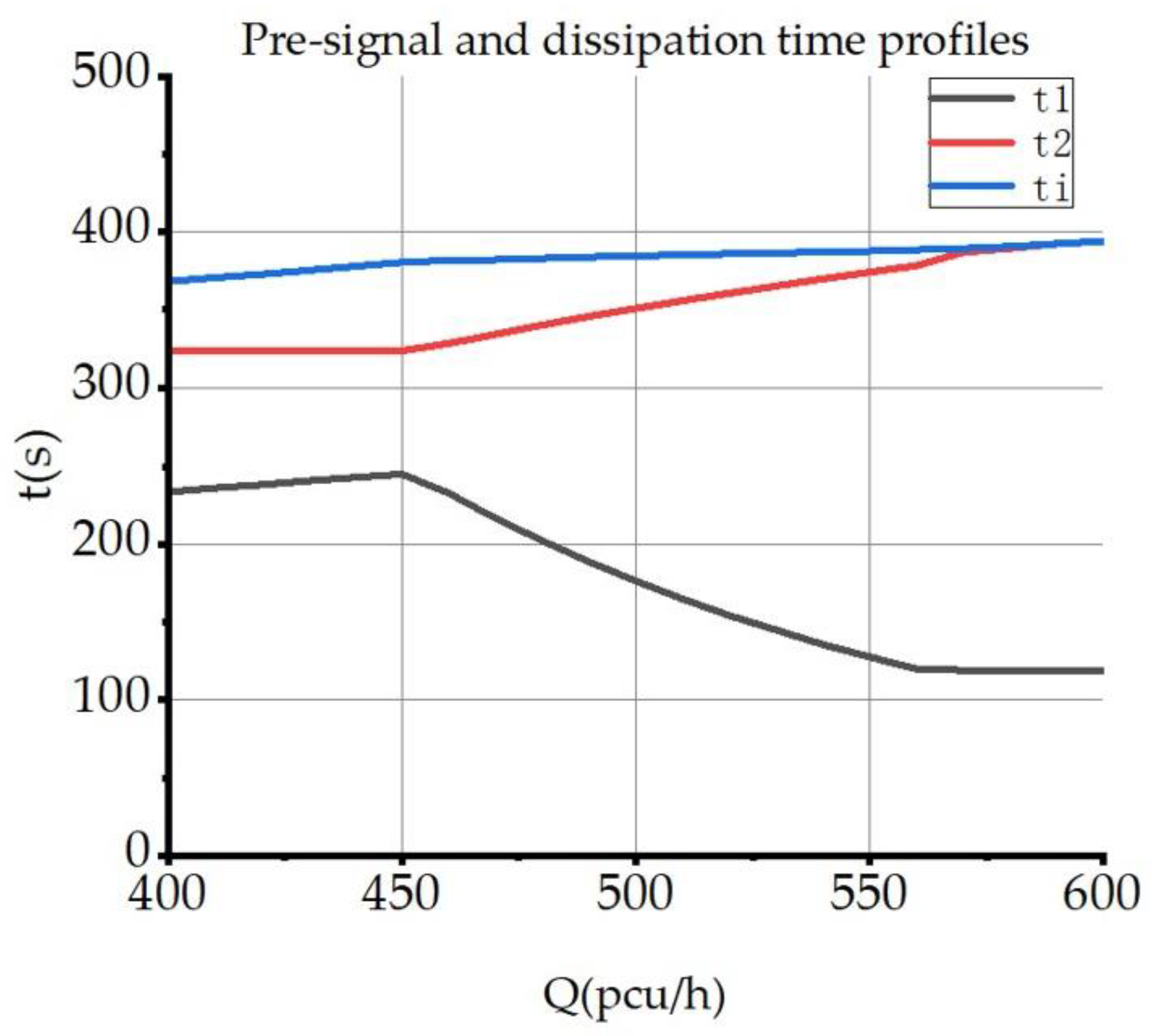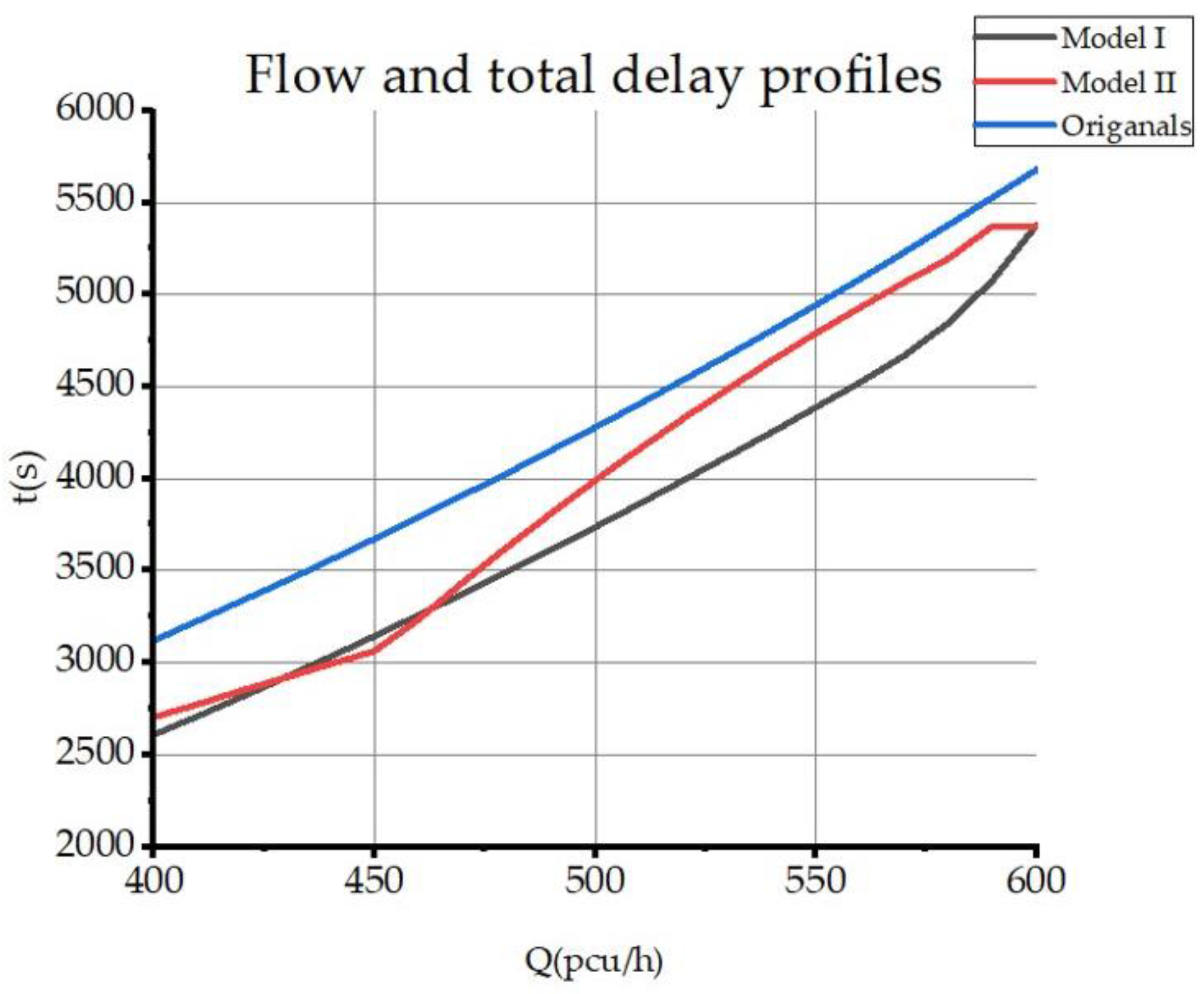In conventional left-turn designs, left-turn steering usually requires left-turning vehicles to change lanes, which reduces the throughput efficiency. In an early theoretical study of EFL, Xuan et al. [
13]. demonstrated that this scenario could improve capacity significantly while guaranteeing the primary passing rate based on a pre-signal control scheme for mixed-use lanes. Zhao et al. [
12]. were the first to develop an overall optimization framework including lane assignment, mixed-use zone length, and signal control parameters. Su et al. [
14]. demonstrated the advantages of this design in terms of vehicle left-turn operation and throughput efficiency. In terms of model development, the assumptions and constraints associated with the scheme based on the EFL design of left-turn vehicle conservation, pre-signal opening emptying constraint, and lane length constraint were gradually improved, and the optimization model to maximize the capacity was proposed [
3]. Based on the above design ideas, Wu et al. [
15]. analyzed the delay of left-turn movement and left-turn capacity to optimize the location of the median opening and signal timing of the pre-signal. While the basic model was improved, optimization studies were gradually carried out, and Liu [
16] proposed a shock wave-based optimization method to estimate the maximum left-turn queue length by adding consideration of the unique queuing behavior at the pre-signal. Zhao et al. [
17]. proposed field data-based EFL control to improve the operation of EFL intersections, and further developed a driving signal control strategy. Chen et al. [
18]. performed robust optimization of intersection signal control and conducted extensive research in the case of fluctuating traffic demand at conventional intersections to obtain the most suitable control scheme for different traffic volumes. For the study of traffic signal control, Heydecker [
19] studied the effect of traffic fluctuation on signal timing and formed a set of suitable control schemes to minimize the average delay; Ribeiro [
20] proposed a new control scheme with better generality, and the TRANSYT test results showed that the scheme has good performance in the fluctuation of traffic flow. Considering the traffic demand fluctuations, Park and Kamarajugadda [
21] proposed a dynamic signal control method based on a genetic algorithm, and the simulation results of CORSIM showed that this method has better robust performance than the SYNCHRO control scheme. Yin [
22] proposed three robust optimization schemes that can adapt well to traffic fluctuations. Based on these studies, Li et al. [
23] applied the EFL model, improved the solution algorithm, and proposed a discrete modeling approach to obtain the global optimal solution by transforming the problem into a binary integer program. Tong et al. [
24] proposed a stochastic programming model to optimize adaptive signal control. By comparing with the traditional EFL deterministic linear programming model, it was found that the application of the stochastic programming model can reduce the total vehicle delay and queue length and improve the throughput. A robust optimization model for the integrated design of lane assignment and signal timing at isolated intersections was proposed by Yu et al. [
25]. A pre-signal timing robust optimization model for unsaturated intersections was proposed by Hao et al. [
26]. In terms of the effectiveness of the design, the research team [
14] demonstrated through simulation experiments that the method is effective in improving left-turn capacity and reducing intersection vehicle delays under high left-turn demand. On the other hand, in the work related to the safety of EFL design, researchers used a high-simulation driving simulator to simulate the driving behavior of vehicles applying EFL design and standard markings at intersections. The results suggest that driver confusion can be eliminated by promoting and demonstrating an introduction to EFL use. Additionally, drivers unfamiliar with the borrowed lane rule can use the regular left turn lane to make a left turn. Therefore, the application of EFL does not pose a significant safety issue. However, there are limitations to the simulation, and a large amount of field data still needs to be analyzed for applicable conditions and implementation prerequisites [
27]. Currently, the EFL design has been implemented in several cities in China, such as Jinan, Handan, and Shenzhen. The field data provided by these cities allow the potential safety performance of left-turn maneuvers to be evaluated. The results show that the risk stemming from violations or speeding/under-speeding still exists at EFL intersections. However, it can be offset by providing information about the intersection and penalizing the violating operation [
28]. To improve the operation of EFL intersections, Zhao et al. [
17] proposed a saturation flow regulation model for EFL control based on the field data and further developed a driving signal control strategy. To evaluate the safety, first Wu et al. [
29] analyzed the driver’s response to this design under various traffic signs and markings using a high-fidelity driving simulator. The results showed that this design was unlikely to pose a serious safety risk, although drivers were generally confused and hesitant when encountering an EFL intersection for the first time. Based on this, Zhao et al. [
30]. evaluated the safety using empirical data. The results showed that potential safety issues at EFL intersections mainly include a high percentage of red light running, wrong-way violations during peak periods, and low speeds in mixed-use areas. However, these risks could be mitigated by providing more guidance information and increased enforcement, such as installing cameras to investigate violations. Among the existing signal control methods to address traffic fluctuations are several approaches, including robust signal control, drive control, and adaptive control.
To summarize the above development process, the overall feasibility and safety of the EFL design have been tested comprehensively from conception to practical application, and the corresponding modeling simulation and data analysis are also very comprehensive. Scholars have also done a lot of research in model construction; from the earliest capacity model to the subsequent development of optimization models and analysis of delay, throughput rate, and other indicators, the model has gradually improved, but the shortcoming is that the applicability of EFL design is relatively limited, and the “heavy congestion of left-turn traffic” is the premise of most of the model construction, The intersection service level and tailpipe emission are less considered. On the other hand, the correlation study between EFL design indicators is still not comprehensive, including the length of the borrowing lane, pre-signal distribution, and other design indicators; and traditional traffic indicators are missing. This paper intends to investigate the correlation between pre-signal distribution and intersection indicators by changing the pre-signal distribution and improving the evaluation of the service level of applied intersections based on the consideration of the original signal control scheme, queue evacuation time of left-turning vehicles, saturation, capacity, and other indicators.
At present, EFL optimization schemes are mostly used to optimize congestion at oversaturated intersections. To maximize the relief of oversaturation, the optimization objective of EFL is to obtain the maximum capacity during the effective green light period, and the optimization scheme can maximize the reduction of intersection saturation and achieve the purpose of oversaturated intersection optimization. According to the research results, the intersection control design should be matched with an appropriate duration of passage, so that the capacity is slightly higher than the traffic demand while minimizing the delay, number of stops, fuel consumption, and other indicators, to ensure the smooth flow of vehicles and reduce operating costs. This paper mainly considers the premise that intersection congestion is effectively improved after the EFL optimization scheme is adopted, and the major priority in the objective setting is the service level of the intersection. Based on this, this paper proposes to take delay as the optimization objective under this condition and re-propose the corresponding constraints for the analysis of delay.
By analyzing the intersection traffic flow operation characteristics, establishing a graph theory model with peak hourly flow and design traffic flow, and also analyzing the traffic delay of left-turning vehicles, we derive and establish an optimization model of traffic delay at signalized intersections, calculating the average delay of left-turning vehicles under different pre-signal control schemes in the saturation state and determining the optimal pre-signal control scheme. This study can provide a theoretical basis for the planning and design of urban signal-controlled road intersections, thus improving the level of urban road traffic service, relieving road traffic congestion, and improving urban road traffic planning and management in general.
